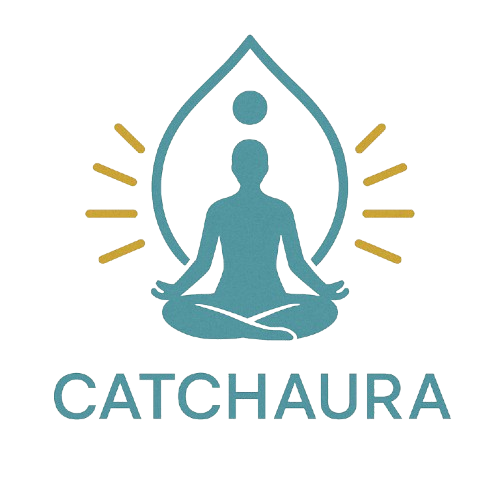Mind & Emotions: Mastering Your Emotion Mind for Holistic Wellness
Estimated reading time: 8 minutes
Key Takeaways
- Understand the interplay between the emotion mind, rational mind, and wise mind for better emotional wellness.
- Learn science-backed strategies to regulate emotions and enhance mental resilience.
- Access free resources like the Emotional Wellness Toolkit from the NIH and CDC.
- Explore biohacking techniques like breathwork and cold exposure for emotional balance.
- Discover how the Eight Dimensions of Wellness framework supports holistic well-being.
Table of Contents
- Introduction: Understanding the Emotion Mind
- The Science of Emotion Mind vs. Rational Mind
- Tools for Emotional Wellness: CDC & NIH Resources
- Biohacking Your Emotion Mind: Energy & Mental Clarity
- Building Better Mental Health: A Holistic Approach
- Conclusion: Balancing Emotion Mind & Wise Mind
- FAQ
Introduction: Understanding the Emotion Mind
The interplay between the emotion mind, rational thought, and wise decision-making is at the heart of emotional wellness. Whether you’re navigating stress, seeking balance, or striving for mental clarity, understanding how your mind, brain, and emotion interact can transform your well-being.
In this guide, we’ll explore:
- The science behind the emotional mind, rational mind, and wise mind
- Practical strategies to regulate emotions and enhance mental resilience
- Resources like the Emotional Wellness Toolkit from the CDC and NIH to support your journey
- Holistic approaches from biohacking to breathwork for emotional equilibrium
By the end, you’ll have actionable insights to cultivate a wise mind that harmonizes logic and feeling—boosting both mental and emotional health.
The Science of Emotion Mind vs. Rational Mind
What Is the Emotion Mind?
The emotion mind is the state where feelings dominate thoughts and actions. It’s impulsive, reactive, and deeply tied to our subconscious. While emotions are essential for intuition and empathy, an unchecked emotional mind can lead to stress, anxiety, or irrational decisions.
The Role of the Rational Mind
In contrast, the rational mind operates on logic, analysis, and objectivity. It helps us weigh pros and cons but can feel detached when overused. The key to emotional wellness lies in balancing these two states.
Achieving the Wise Mind
The wise mind emotional mind rational mind integration—a concept from Dialectical Behavior Therapy (DBT)—is where intuition meets logic. It’s the sweet spot where you make decisions that honor both your feelings and facts.
How to Cultivate a Wise Mind:
- Mindfulness Meditation – Helps observe emotions without judgment.
- Journaling – Bridges emotional and rational processing.
- Breathwork – Regulates the nervous system (try the 5-Second Breathing Energy Hack).
For deeper insights, explore the Emotional Wellness Toolkit from NIH, which offers exercises to strengthen emotional resilience.
Tools for Emotional Wellness: CDC & NIH Resources
1. Emotional Wellness Toolkit (CDC & NIH)
Both the CDC’s Emotional Wellness Toolkit and the NIH’s Emotional Wellness Toolkit provide structured approaches to managing emotions.
Key Features:
- Stress-reduction techniques
- Guided self-reflection prompts
- Strategies for improving emotional awareness
Pros:
- ✅ Free, science-backed resources
- ✅ Easy-to-follow steps for daily practice
Cons:
- ❌ Requires self-discipline to implement consistently
For additional support, the Emotional Wellness Toolkit — More Resources offers extra guides and references.
2. Eight Dimensions of Wellness (UC Davis)
Emotional health is just one piece of holistic wellness. The Eight Dimensions of Wellness framework highlights how emotional, physical, social, and spiritual well-being interconnect.
Why It Matters:
- Encourages a balanced lifestyle
- Helps identify areas needing attention
Biohacking Your Emotion Mind: Energy & Mental Clarity
1. Breathwork for Emotional Regulation
Controlled breathing techniques, like those in the Oxygen Advantage Breathwork, can shift your nervous system from stress (fight-or-flight) to calm (rest-and-digest).
Try This:
- Inhale for 4 seconds
- Hold for 4 seconds
- Exhale for 6 seconds
2. Cold Plunges & Vagus Nerve Stimulation
Exposure to cold (via Cold Plunges for Vagus Nerve Activation) triggers the parasympathetic nervous system, reducing emotional reactivity.
Benefits:
- Lowers cortisol (stress hormone)
- Enhances mood stability
Building Better Mental Health: A Holistic Approach
The Building Better Mental Health guide emphasizes:
- Social Connection – Relationships buffer against emotional distress.
- Physical Activity – Exercise releases endorphins, balancing mood.
- Sleep Optimization – Poor sleep disrupts emotional regulation.
Tip: Pair these habits with Biohacking Sleep for Energy to maximize mental clarity.
Conclusion: Balancing Emotion Mind & Wise Mind
Mastering your emotion mind isn’t about suppressing feelings—it’s about integrating them with rational mind insights to achieve a wise mind.
Next Steps:
- Download the Emotional Wellness Toolkit.
- Experiment with breathwork or cold exposure.
- Assess your wellness across all Eight Dimensions.
By nurturing both emotional and cognitive health, you’ll unlock a more resilient, balanced, and fulfilling life.
FAQ
What is the difference between the emotion mind and the rational mind?
The emotion mind is driven by feelings and impulses, while the rational mind operates on logic and analysis. Balancing both leads to a wise mind.
How can I regulate my emotions effectively?
Techniques like mindfulness, journaling, and breathwork (such as the 5-Second Breathing Energy Hack) help regulate emotions.
Are the CDC and NIH emotional wellness toolkits free?
Yes, both the CDC’s Toolkit and NIH’s Toolkit are free and science-backed.
Can biohacking techniques improve emotional wellness?
Yes, methods like breathwork and cold exposure enhance emotional regulation by influencing the nervous system.
What are the Eight Dimensions of Wellness?
The Eight Dimensions of Wellness framework includes emotional, physical, social, and spiritual well-being for holistic health.

